
Twelve Great Sayings of Hinduism
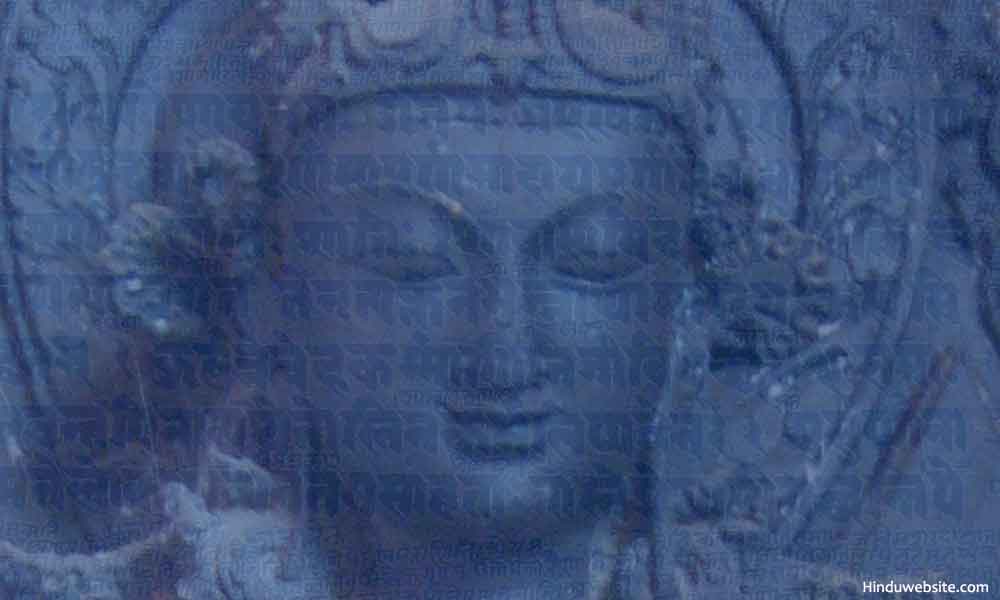
Vishnu - The Upholder of the Worlds
Hinduism has both ritual and spiritual aspects. The ritual aspect of Hinduism, which is as old as the Indian civilization, is predominantly a mantric tradition in which mantras and prayers play an important role. Rituals occupied such an important place in the Vedic tradition that at one time the Mimansa school was its dominant philosophy which believed that by performing sacrificial rituals only humans should aim to abide in Dharma, fulfill their desires or find a place in heaven. The school also did not believe in the existence of a conscious and active Supreme Being. Even in spiritual practices including the yoga system mantras play an important role. The Upanishads and the Samhitas abound in mantras and short statements, which are profusely used in regular usage as well in meditative and contemplative practices. You will find in Hindu texts numerous such statements some of which also go by the name mahavakyas or great statements. We have presented here twelve most important and popular sayings or mantras from Hindu texts which are used in religious discussions, general usage and contemplation. They reflect the core beliefs of Hinduism.
1. Ekam sat vipra bahuda vadanti
This is taken from the Rig Veda (1.164.46). It sums up the essence of Hinduism which contains within itself diverse philosophies and belief systems. It means that Sat is One, but the wise speak about it in many ways. Sat in this context means Truth or the Supreme Reality of Brahman, which is eternal, infinite, indivisible, indescribable, indestructible and unchanging, but appears as many in creation or in the field of Prakriti (primal force or energy). Because of this belief only, although in Hinduism devotees mostly worship numerous gods and goddesses, they are considered Brahman only in their highest and purest aspect.

2. Ahimsa Paramodharmah
This phrase is taken from the epic Mahabharata. It means that Ahimsa is the highest Dharma. Dharma in this context means duty, virtue or function. Thus, ‘ahimsa paramodharma’ means nonviolence is the highest duty or virtue. In Hinduism, duties are meant for householders. They have to perform them as an obligation to ensure the order and regularity of the world. However, the duty of nonviolence is meant for all, including yogis and ascetics who renounce the world. It is also practiced as the highest duty in Buddhism and Jainism. In classical yoga system of Patanjali it is one of the five restraints (yamas) and declared by the ancient commentators of yoga as the highest virtue in which all other virtues culminate.

3. Satyameva Jayate
This is one of the most popular sayings of India, which means Truth alone triumphs. After independence, it was adopted as the national motto of India and appears below the national emblem. It is found in the Mundakopanishad (3.1.6). Its popular meaning is that Truth alone triumphs. However, the verse of which it is a part mentions it in the context of spiritual victory which leads to liberation. It states that by Truth alone the Self is won, but not by untruth. By Truth alone is laid down the path of gods (devayana) by which the sages ascend to the immortal heaven where that supreme treasure of Truth is. In other words, as many people wrongly believe, ‘satyameva jayate’ does not mean that truth always triumphs in this world of good and evil. It only means that truth will always lead to the final victory in achieving liberation from samsara or the cycle of births and deaths. If you abide in truth, you will surely attain eternal life.
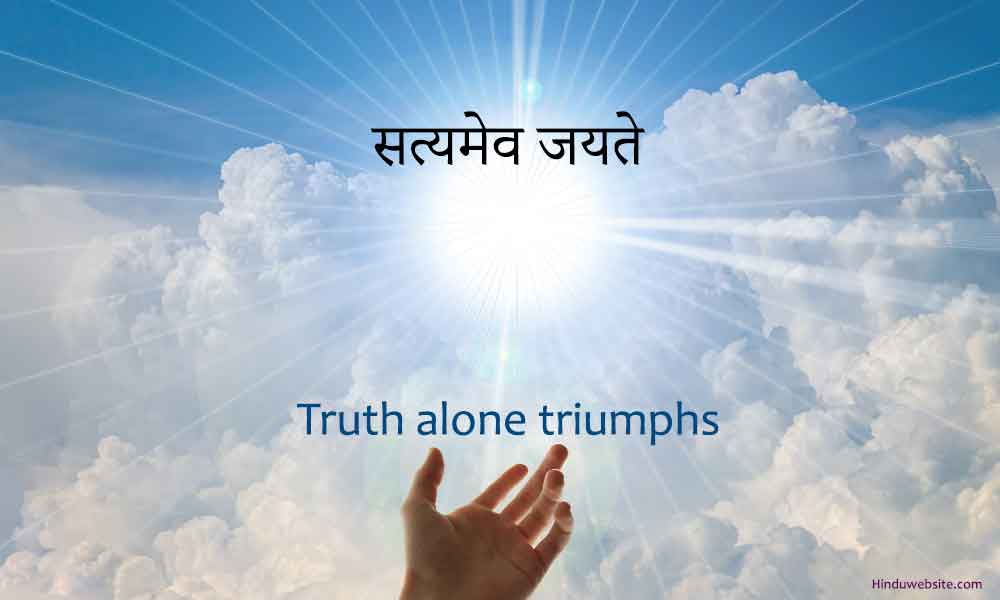
4. Matru Devobhava
This well-known saying is one of the foundational instructions of Hindu ethical code. It is found in the first chapter of the Taittiriya Upanishad (1.11.2) known as Shiskhavalli which contains instructions for the students regarding their duties towards gods, ancestors, etc. It means, may your mother be treated by you as a goddess. The same verse also suggests that one should treat one's father, teacher and a guest as gods. It also contains other instructions that actions must be performed without egoism, and whatever good conduct the teachers practice must be followed. In Hinduism, mothers are personified and revered as an aspect of Mother Goddess or Shakti. She is considered the source wealth and happiness.

5. Satyamvada Dharmamchara
This is also found in the first chapter of the Taittiriya Upanishad (1.11.1) as a part of the instructions given to students after they complete the study of the Vedas. It means, speak truth and practice Dharma. They also constitute foundational teachings of the Hindu ethical code. The verse where it is found also contains other instructions that one should not neglect self-study, or continuation of family lineage or health, material wellbeing. In Vedic tradition, speaking truth is itself a practice of Dharma. The Hindu law books state that one should always speak truth if it does not hurt or harm others or lead to violence. When truth is crucified, people often say, ‘Satyam vadha, dharmam chera,’ which means truth is slain and dharma is imprisoned.

6. Dharmorakshati rakshata
This is found in the Manusmriti (8.15) as a part of the instruction regarding the importance of upholding Dharma. It means that if you protect Dharma, Dharma will protect you. Manu states that if Dharma is violated, Dharma becomes destroyed. Therefore, protect Dharma so that it will protect you. Protecting Dharma means dutifully following the ordained or permitted actions (vidhi), not following the prohibited actions (nishedha), avoiding evil actions (durachara), perverse ideas and instructions (avidhi), and teaching righteous conduct to students and children to ensure that they too will uphold Dharma and continue the tradition when they grow up.
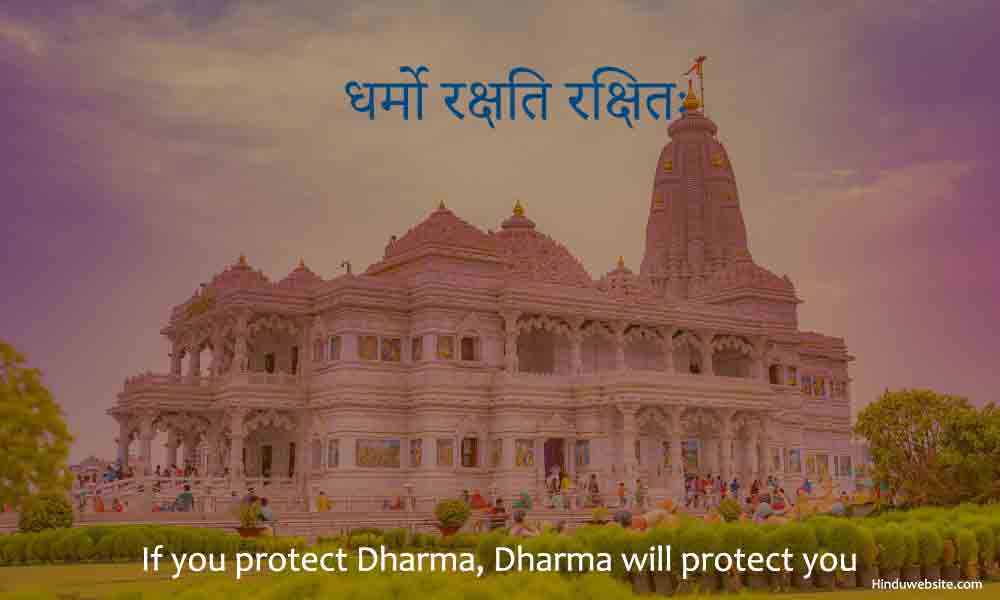
7. Guru sakshat parabrahma
This is found as a part of Guru Gita in the Uttarakhand section of the Skanda Purana which is chanted by devotees and students in reverence to their teachers. It reflects the importance of a teacher in Hinduism and the exalted position he enjoys. It suggests that a guru is evidently the supreme Brahman himself. The verse, of which it is a part, also states that the guru is Brahma, Vishnu, Shiva and verily Brahman himself. In Hinduism, gurus are highly respected, especially enlightened, spiritual teachers (satgurus) and teachers of the Vedas and other sacred texts. However, the tradition also draws a clear distinction between teachers who teach selflessly without taking money and those who charge money for their services. The latter are respected but not revered.
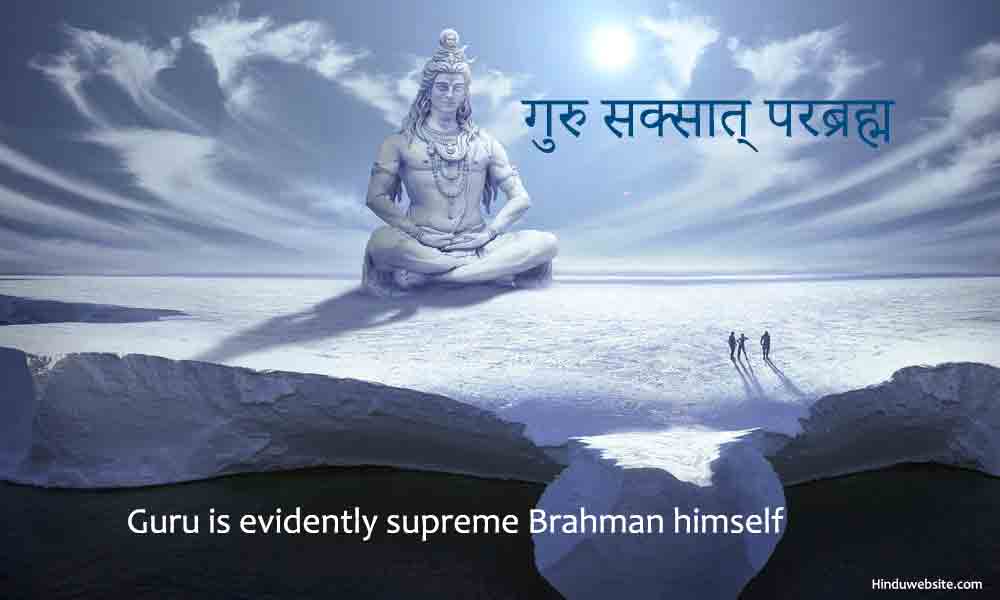
8. Isavasyamidam sarvam
The first verse of the Isavasya Upanishad begins with this declaration. It means that all this is the habitation (vasa) of the Supreme Lord (Isa). The verse also states that he is the source of all actions and movements. Thus, it refers to the omnipresence and omnipotence of Isvara and conveys the need to perform actions without assuming ownership of doership, accepting the truth that we live in the world of God and all this belongs to him. An alternate statement is ‘sarvam khalvidam brahma’ from the Chandogya Upanishad (3.14.1) which means, all this is verily Brahman. However, in a philosophical sense the world is not Brahman. It is just a projection of him in the field of Prakriti. The supreme consciousness of Brahman pervades it as its very Self. It exists in Brahman, but Brahman does not exist in it. This is an important distinction one should remember.
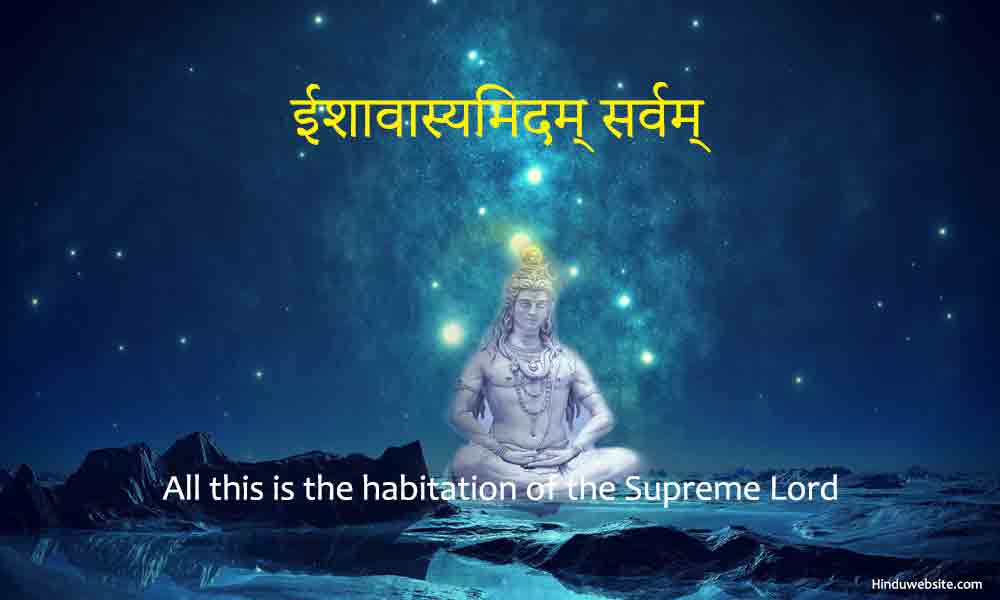
9. Na bhuto na bhavishyati
The literal meaning of this expression is, ‘neither in the past nor in the future’. It has been used in different contexts to declare the uniqueness of someone or something. For example, if a person sees a unique wonder, he may say that it has no parallel either in the past or in the future. It is often euphemistically used by people to shower praise upon certain political leaders, kings and rules. However, such expressions convey vanity and egoism. The phrase is commonly used in reference to the Supreme Being or his manifestations such as Brahma, Vishnu or Shiva who are one without a second and another one like whom cannot be found or expected in the past or in future.
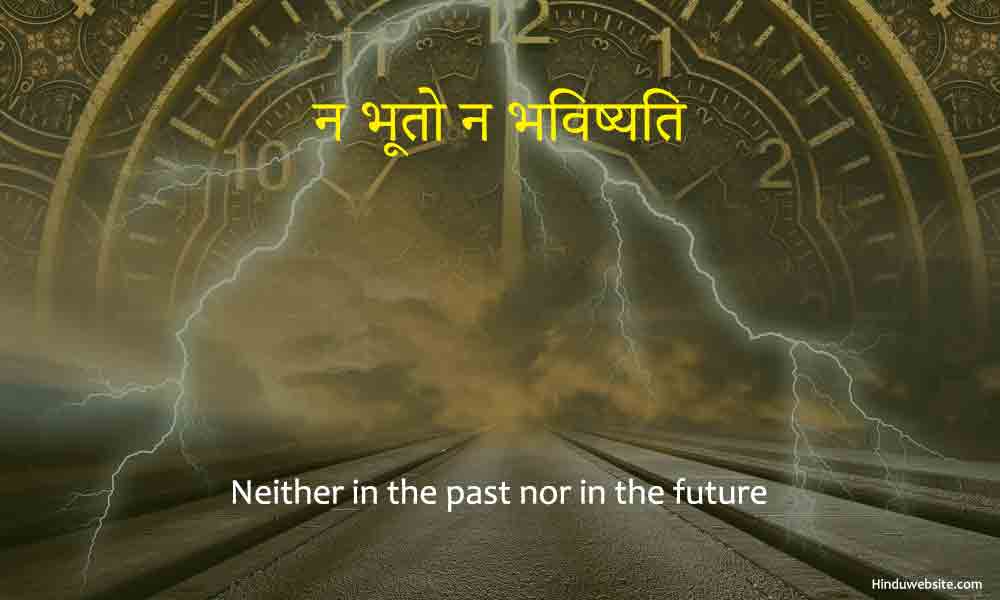
10. Aham Brahmasmi
This mahavakya (great saying) is found in the Brihadaranyaka Upanishad (1.4.10) and forms the core belief of the Advaita School, according to which the supreme reality is one and only, and everything else including the individuality of a being is an illusion. It also means that there are no everlasting individual realities, since the self in each being is but Brahman himself. Although the world appears to be real and stable, it is but an illusion which is like a dream, has no existence of its own and does not last for long. The other identical expressions are, ‘you are that’ (tattvamasi),’ ‘the self is Brahman (ayam atma brahma),’ ‘Brahman is intelligence (prajnanam brahma),’ I am the supreme Brahman (Ahamasmi parambrahma),’ ‘I am That (soham asmi)’ etc.

11. Nathicharami
This is an end part of the Hindu marriage vow, “dharmecha arthecha kamecha naathicharami,” which is found in the Grihyasutras and which a bridegroom must take as a promise to the bride’s father during the marriage ceremony with gods as the witness. By that vow, it binds the groom to an important principle of Dharma that as a householder he must share his duties with his wife in all circumstances so that she becomes a shareholder in his karma. It means that in pursuing the four aims of human life namely Dharma (duty), Artha (wealth), Kama (pleasure) and Moksha (liberation), he would neither cheat nor surpass nor neglect his wife; and in good times as well bad times, he would consult his wife, take her into confidence, be faithful to her and walk together with her in all his duties and obligations as a householder.

12. Aum Shanti, Shanti, Shanti
It is a peace mantra which is meant to invite peace and sanctify the not only place where it is uttered but also everywhere else. Shanti literally means peace, prosperity, happiness, good fortune, auspiciousness, and so on. In other words, by uttering it, a devotee seeks all these for himself and others. The mantra is commonly uttered by devotees and worshippers during rituals and devotional prayers or to mark the ending of an important religious ceremony or spiritual activity. Their wish for peace (shanti) is sanctified and energized further by the addition of the sacred syllable Aum. By uttering ‘shanti’ three times, the worshippers seek peace of three types. At the individual level, it is peace in the body, in the mind and in intelligence. At the cosmic level, it is peace upon earth (bhu), peace in the mid-region (bhur) and peace in heaven (bhuva). The syllable ‘Aum’ represents the all-pervading Self or Supreme Brahman who connects the three as a thread (sutra) or a filament and holds them together.
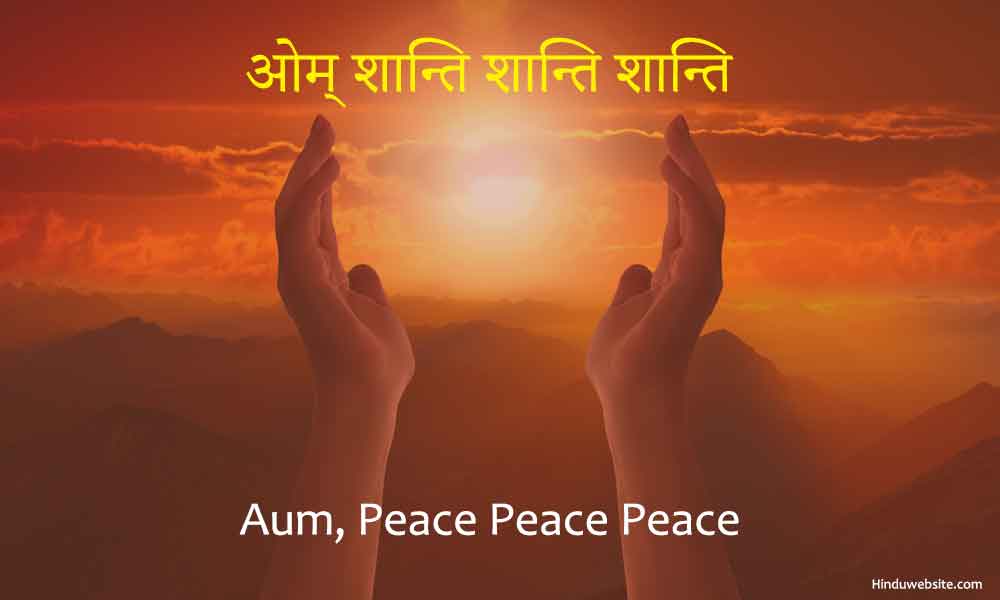
Suggestions for Further Reading
- The Symbolism of Snakes and Serpents in Hinduism
- Ten Distinguishing Features Of Hinduism
- Ten Reasons Why You Should Worship Shiva
- The River Sutra - Lessons From the River
- The Ten Main Duties (dharmas) in Hinduism
- The Ten Manifestations Of Sattva in Hinduism
- The 12 Manifestations of Brahman, the Supreme God of Hinduism
- Ten Teachings of the Buddha From the Dhammapada
- The Meaning And Significance Of Swastika In Hinduism
- What is Prana? The Five Types of Breath
- Hinduism and the God of Death
- Om, Aum, Pranava or Nada in Mantra and Yoga Traditions
- Wealth and Duty in Hinduism
- Hindu Gods - Lord Ganesha
- Symbolism and Significance of the Descent Of Ganga
- Symbolism of Ganga As the Purifier and Liberator
- The Meaning and Significance of Heart in Hinduism
- The Origin and Significance of the Epic Mahabharata
- Yin and Yang, and the Hindu Connection
- Symbolism in the Story of Sagar Manthan, the Churning of The Ocean
- The Symbolic Significance of Puja Or Worship In Hinduism
- Essays On Dharma
- Esoteric Mystic Hinduism
- Introduction to Hinduism
- Hindu Way of Life
- Essays On Karma
- Hindu Rites and Rituals
- The Origin of The Sanskrit Language
- Symbolism in Hinduism
- Essays on The Upanishads
- Concepts of Hinduism
- Essays on Atman
- Hindu Festivals
- Spiritual Practice
- Right Living
- Yoga of Sorrow
- Happiness
- Mental Health
- Concepts of Buddhism
- General Essays
Image Credits: The content of the article is copyright Hinduwebsite.com and shall not be reproduced in any format or medium without prior written permission.